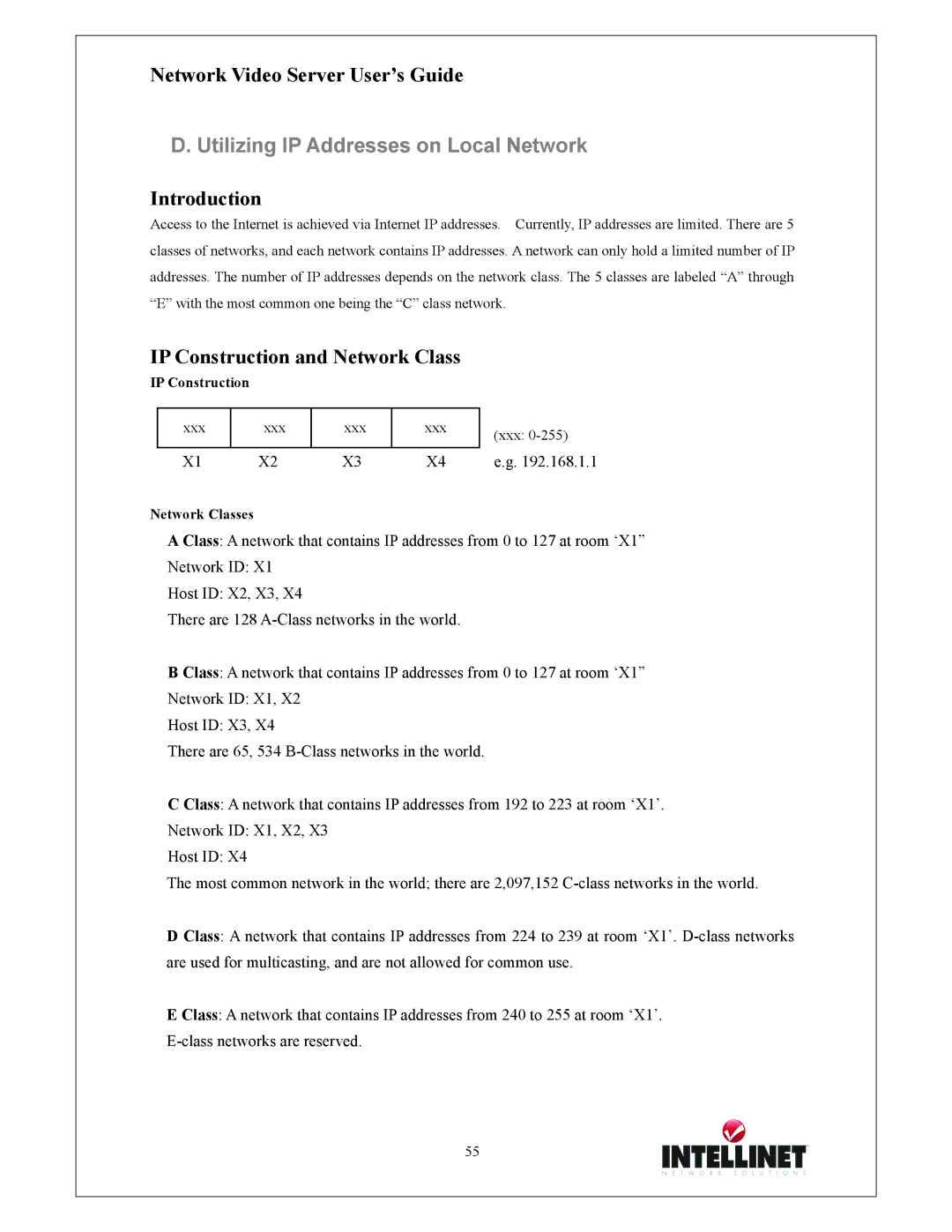
Network Video Server User’s Guide
D. Utilizing IP Addresses on Local Network
Introduction
Access to the Internet is achieved via Internet IP addresses. Currently, IP addresses are limited. There are 5 classes of networks, and each network contains IP addresses. A network can only hold a limited number of IP addresses. The number of IP addresses depends on the network class. The 5 classes are labeled “A” through “E” with the most common one being the “C” class network.
IP Construction and Network Class
IP Construction
xxx
xxx
xxx
xxx
(xxx:
X1 | X2 | X3 | X4 | e.g. 192.168.1.1 |
Network Classes
A Class: A network that contains IP addresses from 0 to 127 at room ‘X1”
Network ID: X1
Host ID: X2, X3, X4
There are 128
B Class: A network that contains IP addresses from 0 to 127 at room ‘X1”
Network ID: X1, X2
Host ID: X3, X4
There are 65, 534
C Class: A network that contains IP addresses from 192 to 223 at room ‘X1’.
Network ID: X1, X2, X3
Host ID: X4
The most common network in the world; there are 2,097,152
D Class: A network that contains IP addresses from 224 to 239 at room ‘X1’.
E Class: A network that contains IP addresses from 240 to 255 at room ‘X1’.
55
